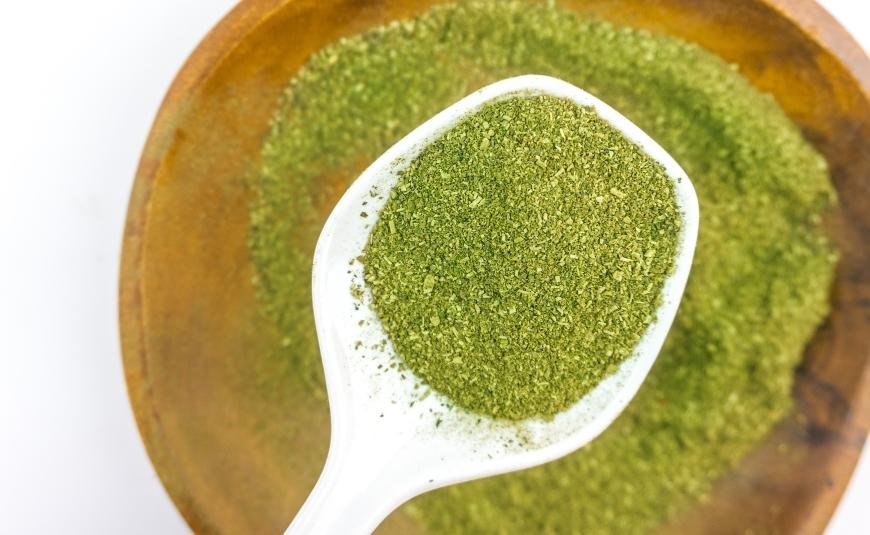What Is Kratom
Discover "What is Kratom" in our comprehensive guide, exploring its history, effects, and safety for young adults interested in this unique plant.

What is Kratom? This question has been on the minds of many young adults seeking alternative recreational experiences. Originating from Southeast Asia, Kratom (Mitragyna speciosa Korth) has recently gained recognition in the West for its long-standing traditional use.
In this blog post, we will delve into the rich history of Kratom use, exploring its origins and cultural significance. We will also discuss the various effects experienced by kratom users when consuming different strains and preparations of these unique leaves.
Furthermore, we'll examine the safety concerns surrounding kratom products and address some common misconceptions about potential risks. By exploring the pros and cons of kratom, you can make a well-informed decision about whether or not to add it to your routine.
Finally, we'll take a peek at the initiatives of entities such as the American Kratom Association to monitor kratom responsibly while pushing for more research into its potential healing benefits. So let's dive in – what is Kratom?
Table of Contents:
- What is Kratom?
- History of Kratom Use
- Effects of Kratom Use
- Safety of Kratom Use
- FAQs in Relation to What is Kratom
- Conclusion
What is Kratom?

Kratom (Mitragyna speciosa) is a tropical evergreen tree native to Southeast Asia, with leaves that contain compounds that can have psychotropic (mind-altering) effects. For centuries, Kratom (Mitragyna speciosa) has been used in traditional medicine and more recently it is gaining popularity as a natural remedy for pain relief, anxiety, depression and opioid addiction. Kratom is obtainable in various forms, such as powder, capsules and extracts.
History of Kratom Use:
Since ancient times, cultures throughout Southeast Asia such as Thailand, Indonesia and Malaysia have utilized Kratom for medicinal purposes. Pieter Willem Korthals, a Dutch botanist, gave the plant its scientific name Mitragyna speciosa in reference to the Greek word mitra meaning "headband" or "crown". The plant was traditionally chewed fresh or brewed into tea to treat ailments ranging from fatigue to fever. In more recent times kratom use spread beyond Southeast Asia with some Western countries adopting it as an herbal supplement due to its purported health benefits such as relieving chronic pain and anxiety.
Effects of Kratom Use:
At small amounts, kratom can bring about a sense of comfort and augmented vigor which may last for up to 6 hours; higher dosages could lead to extended effects that persist for as long as 8 hours. At moderate dosages users may experience mild euphoria while larger doses can cause intense hallucinations along with sedation and nausea. There are also reports of increased libido among some users although this effect is not consistent across all individuals taking kratom products.
Safety of Kratom Use:
Although kratom is generally safe when taken responsibly, excessive use may lead to potential liver damage over time. These risks are rare when taken according to recommended guidelines issued by medical professionals specializing in drug safety protocols for natural substances like kratoms. Additionally, there are no known interactions between other drugs when taking kratoms, so it is important that users always consult their doctor before mixing any substances together including prescription medications.
For centuries, kratom has been employed as an herbal remedy in Southeast Asia, derived from a tropical evergreen tree. People are understandably intrigued by the past and applications of this extraordinary plant. Let us now take a look at how kratom has been used throughout time.
History of Kratom Use

The first known use of kratom dates back to 1836, when it was reportedly discovered by Thai farmers observing its effects on their laborers. Thai farmers were the first to observe the effects of kratom after their laborers ingested it, thus discovering its existence. Kratom was traditionally used as an energy booster and stimulant, helping people stay alert and productive during long hours of manual labor. Kratom also had the potential to provide therapeutic benefits, such as alleviating pain and enhancing positive emotions.
Recently, kratom has gained recognition in Western nations as a potential remedy for conditions such as depression, anxiety and chronic pain. Many users report feeling more relaxed after taking small doses of kratom while others find that larger doses can be stimulating and energizing - similar to coffee or tea but without the jitters or crash associated with caffeine-based products.
Alkaloids from kratom interact with opioid receptors in the brain, producing a range of effects contingent on dosage. At low dosages (1-5 grams), these alkaloids act as a mild stimulant, propelling energy levels and intensifying focus and concentration. At higher doses, kratom's alkaloids may be able to produce sedative effects that are more effective than traditional pharmaceuticals such as benzodiazepines or SSRIs in relieving stress and anxiety.
Kratom has been used for centuries as a traditional medicine in Southeast Asia, and its effects have been widely studied. Having examined its long history, let us now investigate the potential benefits and drawbacks of kratom consumption.
Effects of Kratom Use
Kratom, also known as Mitragyna speciosa, is a tropical evergreen tree native to Southeast Asia. For centuries, this tropical evergreen tree native to Southeast Asia has been utilized by the local traditional cultures for its therapeutic and healing properties. Kratom has recently gained traction as a result of its possible health advantages, like pain relief and stress decrease. However, it’s important to understand both the positive and negative effects of using kratom before deciding whether or not it’s right for you.
The primary active compounds found in kratom are mitragynine and 7-hydroxymitragynine (7-HMG). These alkaloids interact with opioid receptors in the brain which can lead to feelings of euphoria and relaxation. Kratom's alkaloids may offer relief from various physical and mental ailments, including chronic pain, anxiety, depression, insomnia, PTSD (post traumatic stress disorder), drug addiction withdrawal symptoms and more.
Kratom can also provide energy boosting effects due to its stimulating properties. Many users report feeling more alert after taking small doses of kratom which could be beneficial if you need an extra boost throughout your day without relying on caffeine or sugar based stimulants like energy drinks or coffee. Additionally, some users find that taking larger doses helps them sleep better at night since it reduces physical discomfort while promoting relaxation without sedation like most prescription sleeping pills do.
Although there is still much to be learned about the long-term effects of using kratom, some short-term side effects such as nausea/vomiting, constipation/diarrhea, dizziness/lightheadedness and increased heart rate have been reported. Some short-term side effects reported include nausea/vomiting, constipation/diarrhea, dizziness/lightheadedness, increased heart rate and dry mouth but these tend to subside quickly once use stops completely. Thus, it is wise to stick to the suggested dose, watch for any modifications attentively.
The impacts of Kratom intake may differ depending on the person, so it is important to be conscious of possible dangers and advantages. With this in mind, it is prudent to consider the safety implications of Kratom use.
Safety of Kratom Use
Kratom has been used for centuries in Southeast Asia as a traditional medicine and natural stimulant. Though its impacts are usually gentle, there is still some worry about the security of taking kratom. In this article, we will delve into the research on kratom's safety and its potential risks.
Nausea and vomiting are the most commonly reported side effects of kratom use, typically resulting from consuming too much or taking it on an empty stomach. This can be caused by consuming too much or taking it on an empty stomach. It’s important to note that these symptoms are usually mild and don’t last long if you take smaller doses more frequently throughout the day instead of one large dose at once.
FAQs in Relation to What is Kratom
What is the science behind kratom?
Kratom (Mitragyna speciosa) is a tropical evergreen tree in the coffee family native to Southeast Asia. It has been used for centuries as an herbal remedy and recreational drug, with its active compounds being mitragynine and 7-hydroxymitragynine. The alkaloids present in kratom interact with opioid receptors, leading to various effects ranging from stimulation to sedation that are contingent on the dosage taken. Kratom's pharmacological profile is further enhanced by the presence of other bioactive compounds such as flavonoids, terpenoid saponins, polyphenols and various glycosides.
What is the mechanism of action of kratom?
Kratom acts on the opioid receptors in the brain to produce a range of effects. Kratom binds to mu and delta opioid receptors, which can bring about pain alleviation, joyfulness and drowsiness respectively. Kratom's alkaloids also stimulate the serotonin and norepinephrine pathways in the brain, resulting in heightened energy levels and improved mood. The alkaloids present in kratom bind to these receptor sites throughout the body producing analgesic effects similar to those of opioids but without respiratory depression or other side effects associated with opioids.
Conclusion
Kratom is a unique plant with potential benefits and risks. Its utilization in customary medication has been noted, yet the impacts when taken for recreation purposes are as yet being investigated. Given the limited evidence of its potential benefits, caution should be taken when using kratom for recreational or medicinal purposes. In conclusion, those who choose to take kratom should do so cautiously and always follow dosage instructions carefully.






































































































































